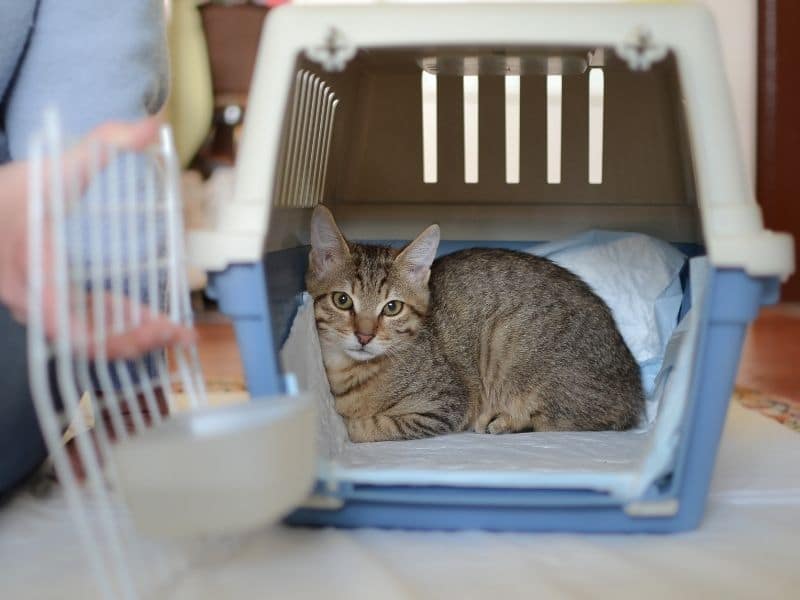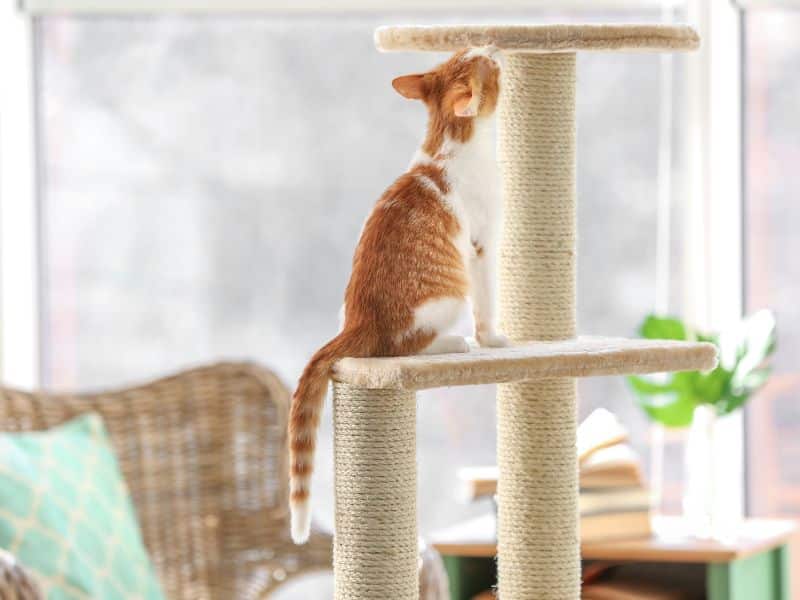THE ESSENTIALS
Introducing your new pet into your home in a stress-free manner
Moving into a new home can be a stressful event for your new pet. They respond to events in the home in a very similar way to humans.
It is important therefore that before you adopt a new pet you consider the following issues so that you understand if there are likely to be additional stresses placed on your cat/ kitten:
A new baby in the home;
Introducing your new pet to other pets in the home;
An impending house move;
An impending divorce, relationship breakdown, or arguments within the home;
Other impending changes to the household e.g. new partner, housemates, children leaving/ returning ;
Impending building work, significant redecorating or refurbishment;
Cats don’t generally cope well with loud noises (such as hammering) or strange smells (such as paint) or the presence of builders in their home. For short term, small projects, confine your cat to one room with a litter tray at the furthest point in your home from the source of the noise.
For larger, lengthier projects, it may be better to consider placing your cats in the safety of a boarding cattery, or have them stay at a friend’s or relative’s home (kept entirely indoors though so that they don’t go missing).
Try to keep moving house as stress-free for your cat as possible. Keep your cat confined to one room on moving day, and place him or her in one quiet room upon arrival at your new home.
You should also take into consideration whether for example the cat/ kitten will be home alone for large parts of the day (adopting two may be more appropriate) and what arrangements you can make to have your pet(s) looked after in the event you travel for business or leisure.
Each of these factors should be thought about before taking the decision to bring a new pet into your household. With proper planning it should be possible to carry on with your plans for adoption however and in some instances it may be appropriate to delay for a short while until the situation has been resolved.
There may also be other issues that concern you. You can take a look at how to think about those issues using the following links.
What do you need to purchase for your new family member ?
Basics:
- Water
- Litter tray
- Food,
- Comfy bed
- One food bowl
- One water bowl
Remember to place them away from each other and the cat tray!
A comfortable bed: Cats need a safe place to sleep, and whatever you buy should be soft and warm.
Appropriate shade: In the heat of a Maltese summer, it is important that your pet has somewhere he can escape to that is relatively cool.
An uncovered litter tray: if you would like to consider a covered tray, it is best to have that IN ADDITION to an uncovered tray and only take the uncovered tray away when you are sure that your pet is comfortable using it.
You should plan to have one more tray than you have cats (e.g. 2 cats = 3 trays).
Keep it far away from your cat’s food and water area, as cats, just like humans, prefer to eat in a dining area, not a toilet!
Cat litter – there are a number of choices available – we generally use fine clumping litter as we find it to be the most economical and practical.
A poop scoop : if you decide to use clumping litter (which is usually the most economical) then a metal scoop with wide holes mostly works best.
Check the disposal method for your litter on the litter bag. Clumping litter will be “black bin” waste.
Choosing cat food : Unsurprisingly, the best cat foods for your kitten/ cat are also the most expensive. You should aim to buy cat food which is most appropriate to its age and health. Cats can also be choosy, changing their allegiance to certain cat foods frequently, so be prepared to experiment.
Your vet may well advise special foods as well as your cat gets older.
There are special kitten foods available, and these are typically much more energy dense to allow your kitten to grow. Young kittens often have gastrointestinal upsets, so you may be advised to obtain gastrointestinal kitten food.
Good quality wet food which more closely corresponds to their natural diet is usually better for your cat’s health than dry food. It can however be useful to ensure that there is dry food available for snacking, if for example you will be out of the house, and it is a hot day.
Cat treats can help make your cat comfortable and happy with you, but beware feeding them too much. An overweight cat will be less happy than a sleek, active cat in the long run.
You can find out more about choices here
Keeping your cat happy and active through play

Providing your cat with entertainment is quite simple and does not need to cost much
Access to a high spot : Cats like high ground, so give them a place where they can view their surroundings. This could be a cat tree, or a simple cardboard box place on a dresser.
A scratching post: Scratching is a natural part of cat’s behaviour and helps to keep claws trim and hopefully prevent them scratching your furniture. You can also buy deterrent sprays for the furniture if your cat does develop a liking for scratching something. You would prefer he didn’t and double-sided clear tape that can for example be put on divan bed edgings and will put him off scratching there.
Media for cats : YouTube has “CAT TV” which includes extensive footage of for example bird gardens – some cats are fascinated by this.
Apps for your cat: your phone or iPad will also include games for your cat (e.g. mice running across the screen!) which you can use to stimulate your cat.
Cat toys: available in most pet stores – wands you can play with them with, small soft balls and tiny mice seem to go down well, you can also get laser pointers that they can run after, e careful not to point the laser into their eyes.
A brush: Take the time to brush your cat, he may well come to really enjoy the sensation, and it will keep his coat in the best of condition, especially long haired cats.
Often you will find your cat is more interested in simple household objects than the most expensive toy, so have fun with the children and make your own, some ideas are below.
TRANSPORTING YOUR PET

Cat carrier
When you come to adopt a cat, it is essential that you bring a cat carrier with you so that you can safely transport your animal home.
You should have a carrier available at home, so that if you do need to take your pet to the vet unexpectedly, you can do so safely, and of course you will need it for your annual visit to the vet.
A carrier can also be a convenient way to temporarily confine your pet at home if you need to, e.g. prior to a vet appointment when you want to be certain you can find him at the due time, (not more than a couple of hours).
Choose something well ventilated and sturdy. We recommend one with a top opening as well, as these can be much easier to use if your cat decides for some reason he doesn’t fancy a trip to the vet.

Keeping your cat safe
Please make sure that your cat/ kitten has a collar with your name and address on it.
Microchip
Please consider getting him microchipped at your local vet if it has not already been done.
Travel
Please do not transport your pet without a cat carrier, as travel between destinations is a significant cause of losing pets.


